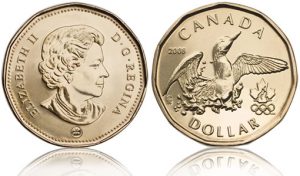 Yesterday’s trade saw USD/CAD within the range of 1.3528-1.3642. The pair closed at 1.3635, going up 0.42% on a daily basis, while marking its fifth gain in the past six trading days. The daily high has been the highest level since June 22nd 2004, when a high of 1.3671 was reported.
Yesterday’s trade saw USD/CAD within the range of 1.3528-1.3642. The pair closed at 1.3635, going up 0.42% on a daily basis, while marking its fifth gain in the past six trading days. The daily high has been the highest level since June 22nd 2004, when a high of 1.3671 was reported.
At 10:14 GMT today USD/CAD was gaining 0.31% for the day to trade at 1.3668. The pair touched a daily high at 1.3679 at 10:09 GMT, overshooting the range resistance level (R3). It has been the highest level since June 21st 2004, when the pair went up as high as 1.3680. The latter may act as a short-term level of resistance and after that – the psychological 1.3700 level. Immediate support may be received at the hourly 21-period EMA first and then at 1.3600.
The loonie has recently been pressured by a continuous fall in oil prices. Crude oil futures for January delivery were down a sixth consecutive trading day to trade at $36.25 per barrel as of 10:33 GMT on Friday. The commodity earlier plunged over 1.30% on the day to reach $36.23 a barrel, or the lowest price level since February 19th 2009. Back then oil futures slid to as low as $34.59 per barrel.
On Friday USD/CAD trading may be influenced by a number of macroeconomic reports as listed below.
Fundamentals
United States
Retail Sales
Retail sales in the United States probably rose 0.3% in November on a monthly basis, according to the median forecast by experts. In October sales were up another 0.1%, after remaining flat in the previous two months.
Among the 13 major categories, 7 registered growth, 5 showed declines and 1 showed no change. In October, the largest increases were reported for miscellaneous store retailers (+1.8%), non-store retailers (+1.4%), building material and garden equipment dealers (+0.9%), health and personal care stores (+0.7%), food services and drinking places (+0.5%) and furniture and home furniture stores (+0.4%). On the other hand, the largest decrease in sales was recorded at gasoline stations (-0.9%). Lower sales were reported also for motor vehicle and parts leaders (-0.5%), electronics and appliances stores (-0.4%), general merchandise stores (-0.4%) and food and beverages stores (-0.3%), according to the report by the US Census Bureau.
Annualized retail sales surged 1.7% in October, following a 2.2% climb in September. Octobers rate of increase has been the slowest one since April 2015, when sales rose 1.3%.
US core retail sales, or retail sales ex autos, probably went up 0.3% in November compared to a month ago, following a 0.2% climb in October. This indicator removes large ticket prices and historical seasonality of automobile sales.
In case monthly retail sales increased at a sharper-than-expected rate in November, this would have a strong bullish effect on the US dollar. The official report by the US Census Bureau is due out at 13:30 GMT.
Producer Prices
Annual producer prices in the United States probably fell for a 10th month in a row in November, by 1.2%, according to the median estimate by experts. In October the annualized Producer Price Index (PPI) dropped 1.6%, or the most since October 2009, when a 1.9% slump was reported. It reflects the change in prices of over 8 000 products, sold by manufacturers during the respective period. The Producer Price Index (PPI) differs from the Consumer Price Index (CPI), which measures the change in prices from consumer’s perspective, due to subsidies, taxes and distribution costs of different types of manufacturers in the country. In case producers are forced to pay more for goods and services, they are more likely to pass these higher costs to the end consumer. Therefore, the PPI is considered as a leading indicator of consumer inflation. In case annual producer prices fell at a lesser rate than anticipated, this would have a moderate bullish effect on the US dollar.
The nation’s annualized core producer price inflation, which excludes prices of volatile categories such as food and energy, probably accelerated to 0.2% in November from 0.1% in the prior month. The latter has been the lowest annual surge in the core PPI in more than eight years. The Bureau of Labor Statistics is expected to report on the official PPI performance at 13:30 GMT.
Reuters/Michigan Consumer Sentiment Index – preliminary estimate
The monthly survey by Thomson Reuters and the University of Michigan may show that consumer confidence in the United States was little changed in December. The preliminary reading of the corresponding index, which usually comes out two weeks ahead of the final data, probably slipped to 91.0 during the current month from a final reading of 91.3 in November. The latter came below the preliminary reading of 93.1, which was reported on November 13th. The survey encompasses about 500 respondents throughout the country. The index is comprised by two major components, a gauge of current conditions and a gauge of expectations. The current conditions index is based on the answers to two standard questions, while the index of expectations is based on three standard questions. All five questions have an equal weight in determining the value of the overall index.
The sub-index of current economic conditions decreased to a final reading of 104.3 from a preliminary 104.8 in November, after a month ago it stood at 102.3.
The sub-index of consumer expectations came in at a reading of 82.9, up from a preliminary value of 82.1 in November, but lower compared to a final reading of 85.6, registered in October.
Participants in the November survey expect that the rate of inflation will accelerate to 2.7% during the next year from 2.5% in the preliminary report and unchanged compared to October.
In case the gauge of consumer sentiment decreased at a steeper pace than projected in December, this would have a moderate-to-strong bearish effect on the greenback. The preliminary reading is due out at 15:00 GMT.
Bond Yield Spread
The yield on Canada’s 2-year government bonds went as high as 0.554% on December 10th, after which it closed at 0.544% to add 0.001 percentage point compared to December 9th. It has been the 6th gain in the past 14 trading days.
The yield on US 2-year government bonds climbed as high as 0.955% on December 10th, or matching the high from the prior day, after which it closed at 0.947% to add 2.4 basis points (0.024 percentage point) compared to December 9th. It has been the 14th gain in the past 19 trading days.
The spread between 2-year US and 2-year Canadian bond yields, which reflects the flow of funds in a short term, widened to 0.403% on December 10th from 0.380% on December 9th. The December 10th yield spread has been the largest one in at least eight months.
Meanwhile, the yield on Canada’s 10-year government bonds soared as high as 1.501% on December 10th, after which it slid to 1.487% at the close to lose 0.004 percentage point compared to December 9th. It has been the 10th drop in the past 14 trading days and also a fifth consecutive one.
The yield on US 10-year government bonds climbed as high as 2.239% on December 10th, after which it slipped to 2.234% at the close to add 1.8 basis points (0.018 percentage point) compared to December 9th. It has been the 6th gain in the past 19 trading days.
The spread between 10-year US and 10-year Canadian bond yields widened to 0.747% on December 10th from 0.725% on December 9th. The December 10th yield difference has been the largest one since August 25th, when the spread was 0.748%.
Daily and Weekly Pivot Levels
By employing the Camarilla calculation method, the daily pivot levels for USD/CAD are presented as follows:
R1 – 1.3645
R2 – 1.3656
R3 (range resistance) – 1.3667
R4 (range breakout) – 1.3698
S1 – 1.3625
S2 – 1.3614
S3 (range support) – 1.3603
S4 (range breakout) – 1.3572
By using the traditional method of calculation, the weekly pivot levels for USD/CAD are presented as follows:
Central Pivot Point – 1.3356
R1 – 1.3423
R2 – 1.3484
R3 – 1.3551
S1 – 1.3295
S2 – 1.3228
S3 – 1.3167





